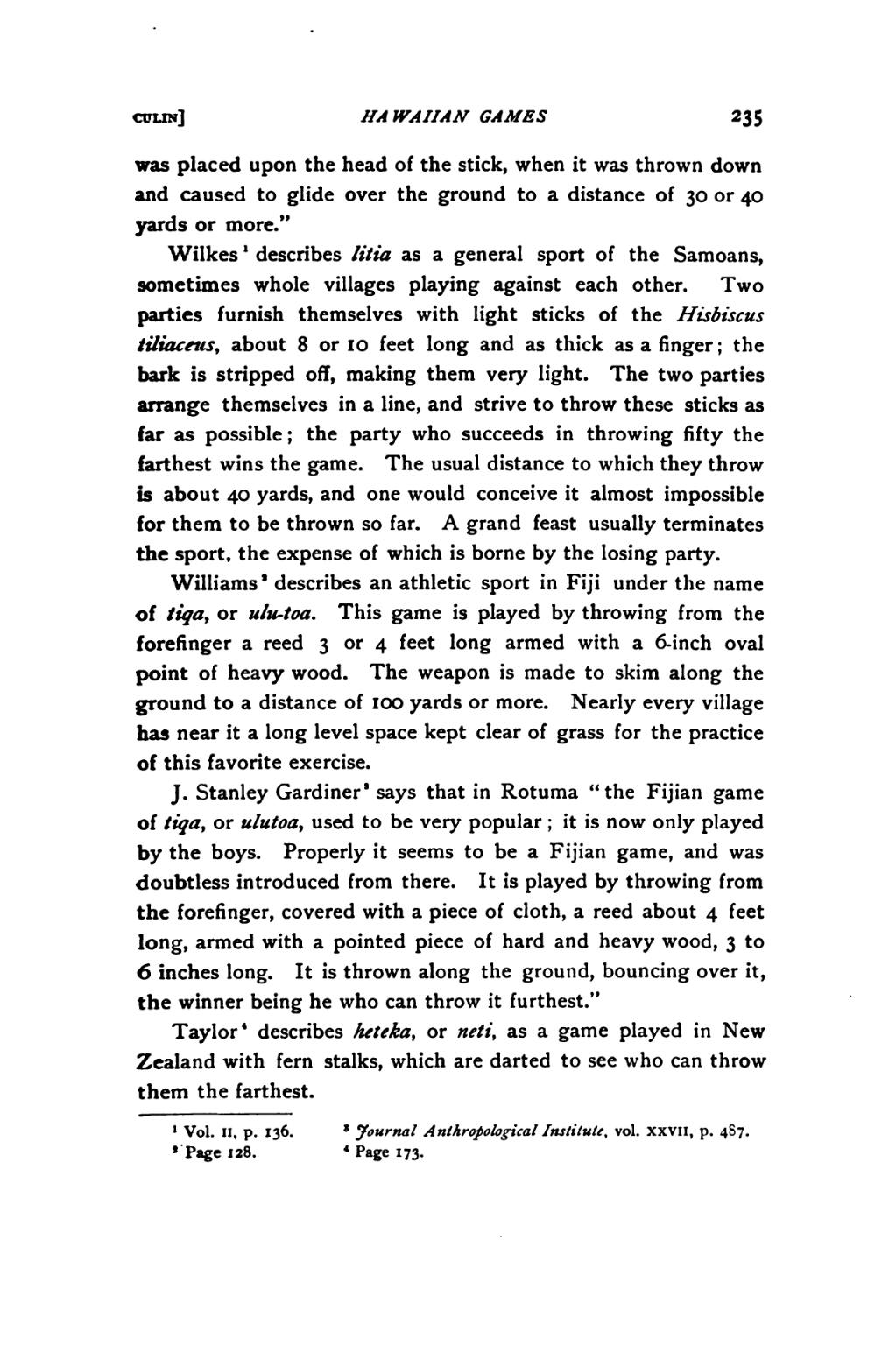culin] HAWAIIAN GAMES 235
was placed upon the head of the stick, when it was thrown down and caused to glide over the ground to a distance of 30 or 40 yards or more."
Wilkes * describes litia as a general sport of the Samoans, sometimes whole villages playing against each other. Two parties furnish themselves with light sticks of the Hisbiscus tiliacetis, about 8 or 10 feet long and as thick as a finger; the bark is stripped off, making them very light. The two parties arrange themselves in a line, and strive to throw these sticks as far as possible ; the party who succeeds in throwing fifty the farthest wins the game. The usual distance to which they throw is about 40 yards, and one would conceive it almost impossible for them to be thrown so far. A grand feast usually terminates the sport, the expense of which is borne by the losing party.
Williams* describes an athletic sport in Fiji under the name of tiqa> or ulu-toa. This game is played by throwing from the forefinger a reed 3 or 4 feet long armed with a 6-inch oval point of heavy wood. The weapon is made to skim along the ground to a distance of 100 yards or more. Nearly every village has near it a long level space kept clear of grass for the practice of this favorite exercise.
J. Stanley Gardiner* says that in Rotuma "the Fijian game of tiqa, or ulutoa, used to be very popular ; it is now only played by the boys. Properly it seems to be a Fijian game, and was doubtless introduced from there. It is played by throwing from the forefinger, covered with a piece of cloth, a reed about 4 feet long, armed with a pointed piece of hard and heavy wood, 3 to 6 inches long. It is thrown along the ground, bouncing over it, the winner being he who can throw it furthest."
Taylor 4 describes heteka, or neti % as a game played in New Zealand with fern stalks, which are darted to see who can throw them the farthest.
��1 Vol. II, p. 136. * Journal Anthropological Institute, vol. xxvii, p. 4S7.
•Page 128. 4 Page 173.
�� �
